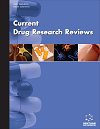
Full text loading...

Numerous therapeutic and culinary species produce scopoletin, a coumarin that is essential for treating a wide range of illnesses as a curative and chemopreventive agent. Globally, chronic illnesses are regarded as a major public health concern. Atypical regulation of various signalling pathways is the primary cause of most of these illnesses, which include cancer, as well as cardiovascular, metabolic, and neurological disorders. In Alzheimer’s disease (AD), amyloid β (Aβ) peptide aggregates are deposited in the CNS, forming plaques. The investigation assessed the capacity of scopoletin to modify the disease to several AD-related factors. It activated the release of insulin in the β cell of the pancreas. Additionally, it has been noted that most currently approved treatments for these illnesses are mono-targeted and related to the development of chemoresistance, which limits their utility and prevents them from demonstrating prolonged efficacy. Conversely, the molecules originating from plants exhibit a multi-targeted nature, which has led to widespread interest in these phytochemicals due to their few adverse effects. The purpose of this review is to summarise the possible consequences of scopoletin. An outline of scopoletin pharmacology, pharmacokinetics, and toxicity is given in this review. In addition, this chemical is non-toxic and has good pharmacokinetic properties, so more research in clinical settings is necessary to develop it as a possible medication. The findings from the investigation could aid in the prevention and management of illnesses as well as the understanding of the benefits of plants containing scopoletin.

Article metrics loading...

Full text loading...
References


Data & Media loading...